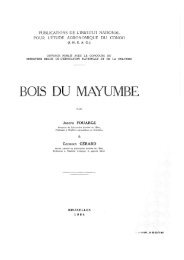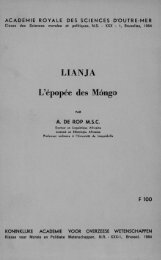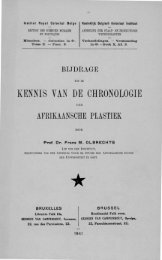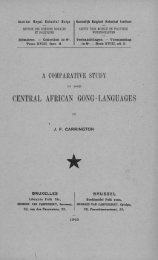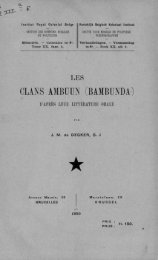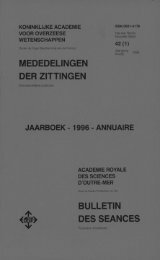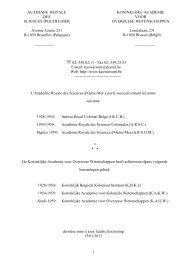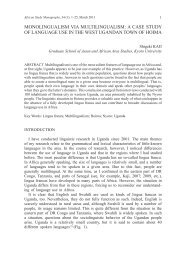KONINKLIJKE ACADEMIE VOOR OVERZEESE WETENSCHAPPEN ...
KONINKLIJKE ACADEMIE VOOR OVERZEESE WETENSCHAPPEN ...
KONINKLIJKE ACADEMIE VOOR OVERZEESE WETENSCHAPPEN ...
Create successful ePaper yourself
Turn your PDF publications into a flip-book with our unique Google optimized e-Paper software.
— 341 —<br />
GPS observations can be interpreted in different ways. We have considered<br />
the baseline vector (fig. 5) between two adjacent points as the principal GPS<br />
observation.<br />
The baseline vectors were computed using the BERNESE software [4], The<br />
BERNESE software is a well-known scientific software developed at the<br />
University of Bern. The components (AX, AY, AZ) of the baseline vectors were<br />
later used for the computation of the Cartesian coordinates (X, Y, Z) of each<br />
point. For the least squares adjustment of all observations, the MOVE3 software<br />
[5] was used. This software, developed at the Delft Technical University, has the<br />
great advantage that it not only computes the accuracy of the coordinates but also<br />
the reliability of the observations. Using some statistical testing, outliers in the<br />
observations can be detected and removed.<br />
The Linking-up with ITRF<br />
The ITRF [6] (fig. 6) consists of a large number of stations, globally spread<br />
and equipped with various types of satellite tracking tools. For our purposes, the<br />
GPS data were the most important.<br />
On a voluntary basis, all these stations send their observations to the IGS<br />
(International GNSS Service), where not only the global coordinates (X, Y, Z) of<br />
each point are computed but their velocities (VX, VY, VZ) too. The mean period of<br />
our observations was 2005.4. The global coordinates computed by the IGS [7]




